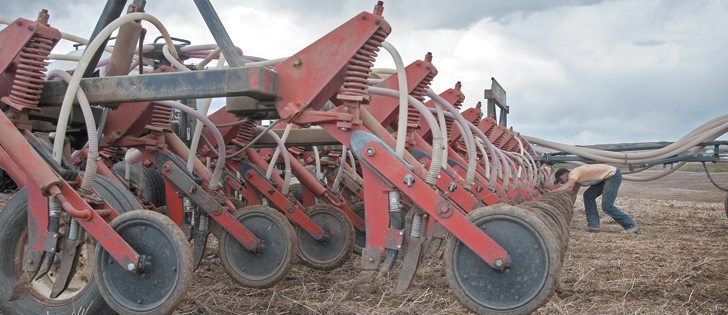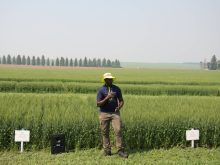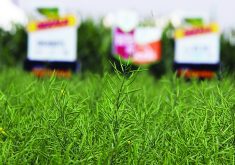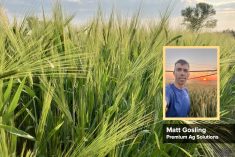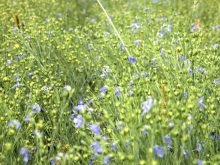1.13 million acres forecast | CWB analyst Bruce Burnett cuts winter wheat forecast by almost 900,000 acres
Winter wheat seeding prospects for 2014-15 have taken a big hit.
“We were thinking it was going to be record breaking, given the amount of unplanted acreage that we had this year in the prime winter wheat growing area,” said Bruce Burnett, the CWB’s weather and crops specialist.
Two months ago he was forecasting two million acres would be planted on the Prairies this fall, which would have shattered the previous record of 1.5 million acres set in 2008.
His revised estimate calls for a crop no bigger than last year’s 1.13 million acres.
Read Also

Manitoba community projects get support from HyLife
HyLife Fun Days 2025 donated $35,000 each to recreation and housing projects in Killarney, Steinach and Neepawa earlier this fall.
Two factors are conspiring against winter wheat: the quality problems of the 2013-14 crop and excessive harvesting delays.
Winter wheat in the main growing areas of eastern Saskatchewan and Manitoba is a disaster with high levels of fusarium and sprouting, low falling numbers and poor protein levels, said Burnett.
He estimates more than half of this year’s crop will either be feed wheat or “toxic waste,” his term for sample grade wheat.
Most of what remains will make the No. 2 grade, which is unusual given winter wheat has more relaxed grading standards than spring wheat. There is usually a much higher proportion of No. 1 grade.
Rain in late August and early September caused extensive quality damage.
“It was in a very critical stage right when we received those heavy, heavy rains that hit the bulk of the winter wheat area,” said Burnett.
“It’s just a matter of timing. The timing this year was just extremely unfortunate for the winter wheat crop.”
If spring planting had been on time, the winter wheat would have been fine and the spring wheat would have suffered, he said.
Late harvest has also restricted winter wheat acreage. Farmers are too busy taking off summer crops to think about planting winter crops.
“In a harvest that has been as severely delayed as this one, it makes it extremely difficult,” said Burnett.
Ken Gross, a Manitoba agronomist with the Western Winter Wheat Initiative, said some acres were seeded in the southwest corner of his province.
“Outside of that, I’ll tell you it’s been a tough go almost everywhere else,” he said.
It was too wet to seed during the first two weeks of September and when the weather finally turned warm, farmers were more concerned about harvesting than seeding.
He believes Manitoba acreage will be well below the 400,000 acres planted last fall.
“I wouldn’t be surprised if we’re down to a quarter of a million, to tell you the truth. I’ve got some key guys that have been growing it every year, and they just couldn’t get it into the ground,” said Gross.
Paul Thoroughgood, a Saskatchewan agronomist with the Western Winter Wheat Initiative, said there was a lot of promise this fall.
“I know from speaking to seed growers that seed sales were very brisk, demand was really high,” he said.
“I suspect a lot of that was targeted towards unseeded acreage, and that is going to be a real challenge.”
Thoroughgood said it’s a shame growers had trouble planting the crop because seeding conditions were ideal.
“My own winter wheat has just jumped out of the ground because the ground was warm and moist and away it went,” he said.
Thoroughgood said it is unfortunate crop insurance guidelines persuaded growers to avoid seeding in mid to late August because crops planted in that time frame would have fared well.
He doesn’t think fusarium was a big problem in Saskatchewan.
“That is pretty much a Manitoba thing that probably got overblown,” said Thoroughgood.
“It was a big deal in Manitoba, but the growers I’ve talked to, in Sask-atchewan anyway, myself included, fusarium levels were low, really low.”
He looks forward to Statistics Canada’s first acreage estimate in early December, noting that sometimes growers are full of surprises.


